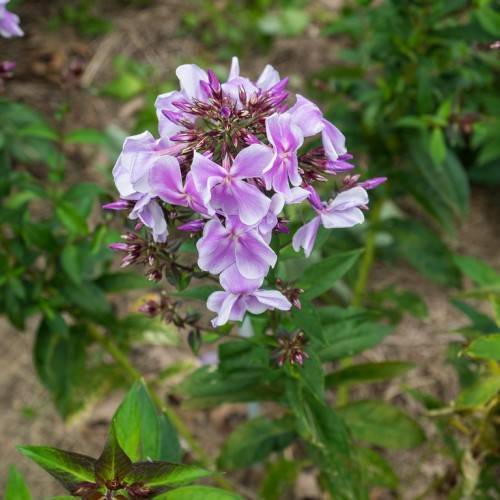
garden phlox
Phlox paniculata 'Franz Schubert'
Also Known As - border phlox,common phlox,common phloxCycle:
Herbaceous Perennial
Watering:
Average
Hardiness Zone:
4 - 8
Flowers:
Flowers In Summer
Sun:
Full sun, Part sun/part shade
Soil:
Rocky , gravelly , dry, Well-drained
Fruits:
Fruits In Autumn Ready In
Leaf:
Yes
Growth Rate:
High
Maintenance:
Moderate
Drought Tolerant:
Yes
Care Level:
Medium
watering
Water garden phlox (Phlox paniculata 'Franz Schubert') once per week during its active growing season. Soak the soil to a depth of 6 to 8 inches each time. Reduce watering when temperatures cool to approximately 60 to 70 degrees Fahrenheit. In colder climates, water just enough to keep the plant from wilting. Suspend watering entirely in winter. In warm climates, waterless periods of 2 to 4 weeks can be helpful in preventing powdery mildew, an issue that plagues this plant.
sunlight
Garden phlox requires 6 to 8 hours of full sun daily for best performance. The flowering shrub prefers late morning sun and some shade in the afternoon during the hottest, hottest part of the day. The plant prefers soil with good drainage and may do best in a section of the garden that receives afternoon shade. If the temperatures become too extreme, some light shade can provide protection from the hot sun and dry humid weather. Be sure not to plant it in an area with intense midday sun.
pruning
Garden phlox should be pruned heavily each year after the blooms have faded. This is usually done in late summer or early fall when the plant has finished its bloom cycle. Pruning should include removing old, spent flower heads and any stems that are overly long or have bare spots. Lateral stems should be cut back by just over half to encourage branching and more blooms next season. Deadheading any additional flower heads that rebloom can also help to keep the plant tidy and encourage more blooms next spring.
